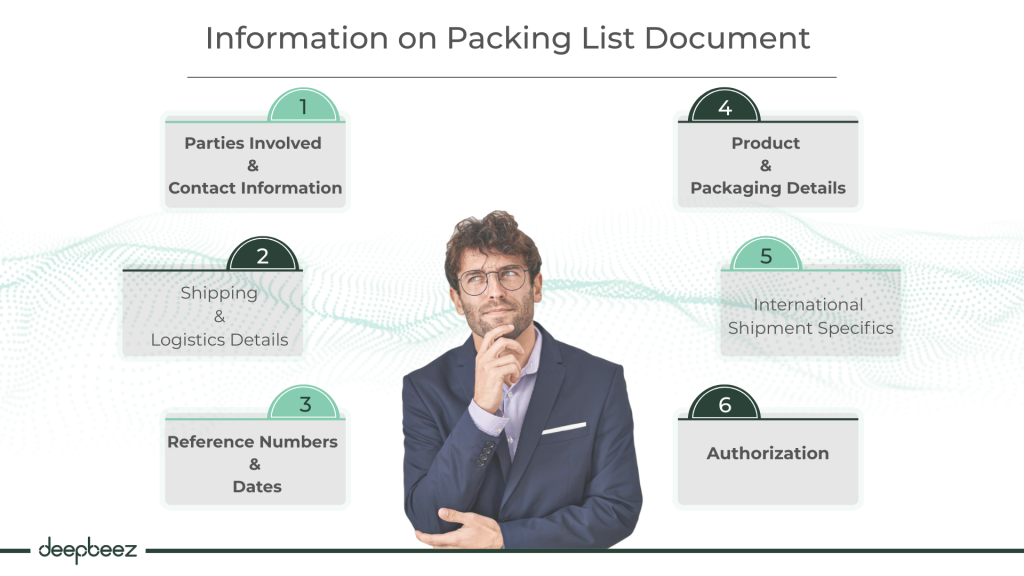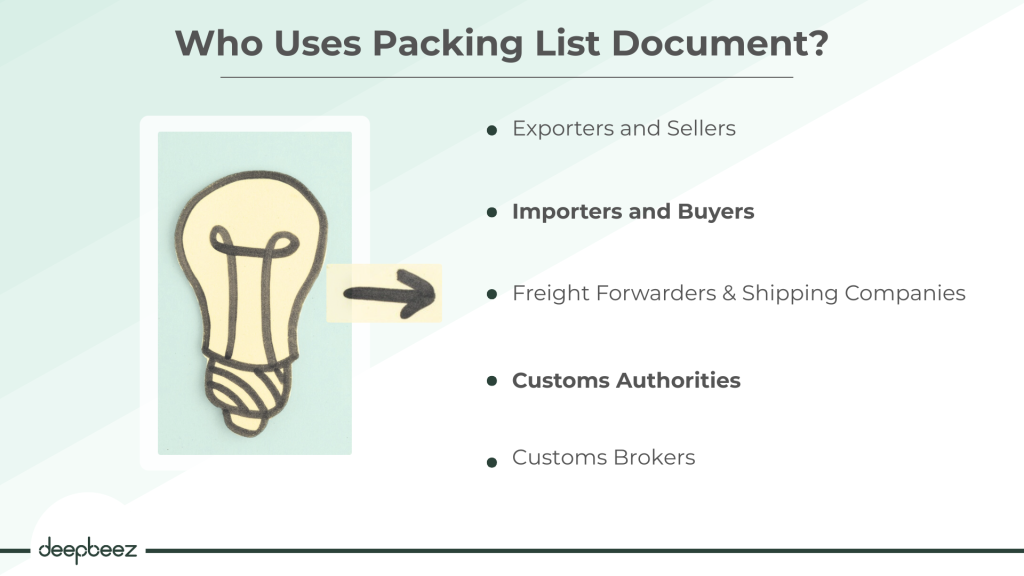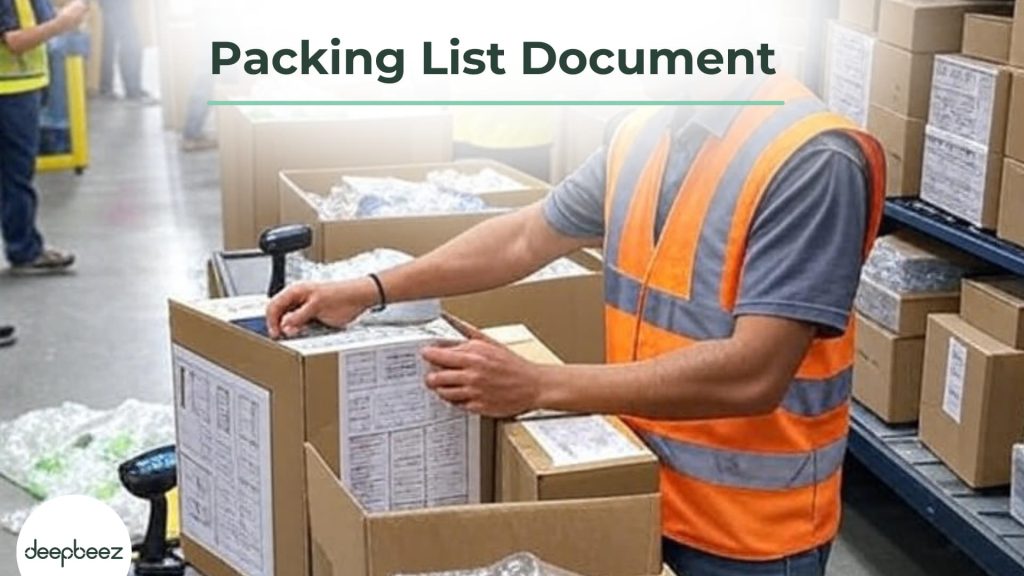Have you ever wondered how millions of packages cross international borders every day without confusion or delays? The secret lies in a simple yet powerful document that most people have never heard of: the packing list. One of the most important information that you should put on the document is HS code of the product. Now, how to find HS code of product?
Whether you’re a business owner looking to expand globally, an entrepreneur starting your first international shipment, or simply curious about how global trade works, understanding packing lists could save you time, money, and countless headaches. Let’s dive into everything you need to know about this essential trade document.
What Is a Packing List?
Think of a packing list as the ultimate “what’s in the box” document for international shipping. It’s a detailed, itemized breakdown of everything inside your shipment – from the smallest component to the largest package.
What is a packing list? A packing list serves as a comprehensive record that shows exactly how your goods have been packaged and loaded for transport. While it might not always be legally required by customs authorities, it’s absolutely indispensable in the world of international trade. Why? Because it bridges the gap between what you’re sending and what the recipient expects to receive. Expert advice? Try to stay customs compliance and avoid fines by correct HTS code lookup.
You might be asking yourself: “Isn’t this just another piece of paperwork?” Not quite. A packing list works alongside other critical trade documents like your commercial invoice (which shows the financial details) and the Bill of Lading (which acts as your shipping contract). Together, these documents tell the complete story of your shipment – what it is, what it’s worth, and how it’s being transported.
Here’s something interesting: in some cases, a comprehensive packing list can even double as a commercial invoice if it includes item values. Talk about efficiency!
What Are Necessary Information on Packing List Document?
Creating an effective packing list is like building a detailed map for your shipment. The more comprehensive your information, especially for international transactions, the smoother your shipping experience will be. Usually, finding the most accurate HS code for your product is a challenging task. We strongly recommend to use Deepbeez HS Code Search tool to find your code easily. Let’s break down what you need to include:

1- Parties Involved & Contact Information
Exporter’s/Shipper’s Details:
- Company name and logo
- Complete address
- Phone numbers and contact details
- Company registration numbers (when applicable)
Consignee’s Details:
- Receiver’s company information
- Full delivery address
- Contact numbers
- Buyer details (if different from consignee)
2- Shipping & Logistics Details
This section is where the rubber meets the road. You’ll need to specify:
- Method of Dispatch: Are you shipping by road, rail, air, or sea freight?
- Type of Shipment: Is it FCL (Full Container Load), LCL (Less than Container Load), or Breakbulk?
- Origin and destination countries
- Vessel or aircraft details
- Port information (loading and discharge)
- Departure dates
- Special handling instructions (Does your shipment need a forklift? Temperature control?)
3- Reference Numbers & Dates
Keep track of everything with:
- Document creation date
- Export invoice number
- Bill of Lading number (if available)
- Buyer’s purchase order number
- Order placement and shipment dates
4- Product and Packaging Details
This is where attention to detail pays off:
| Detail Category | What to Include | Why It Matters |
| Product Information | Product codes, clear descriptions, unit quantities | Helps customs and receivers identify exactly what’s being shipped |
| Packaging Details | Number and type of packages (e.g., “Pallet x 12”) | Shows how items are organized and protected |
| Weight & Dimensions | Net weight, gross weight, package dimensions (m³) | Critical for shipping costs and handling requirements |
| Container Information | Which items are in each container, marks and numbers | Simplifies unpacking and inventory management |
| Value Declaration | Item values and total shipment value | Essential for insurance and customs duties |
5- International Shipment Specifics
For cross-border shipments, you’ll also need:
- Harmonized System (HS) Codes: These help customs officials classify your goods and calculate tariffs
- Container details: What’s in each unit load?
- Wood packaging certificates: Required if you’re using solid wood packaging materials
6- Authorization
Don’t forget the official touch:
- Authorized signature
- Company stamp or seal
- Signatory details
What Are Different Types of Packing Lists in Logistics?
Not all packing lists are created equal. Understanding the different types can help you choose the right approach for your shipment:
1- Internal or Warehouse Packing Lists
These are your basic, in-house documents used for:
- Order fulfillment within your warehouse
- Internal inventory tracking
- Proof of what was packed (like a packing slip)
2- Packing Lists for Customs Operations
These are the comprehensive versions required for international shipments. They include everything from the internal version plus:
- Harmonized System (HS) codes
- Detailed container information
- Complete shipment and parcel values
- Additional compliance information
Pro tip: The complexity of your packing list should match your shipment. Simple items might only need basic descriptions, but high-value or complex goods (like electronics) require detailed listings with individual weights, dimensions, and values.
What Is the Difference Between packing List and Delivery Order?
Let’s clear up some common confusion about shipping documents:
| Aspect | Packing List | Delivery Order |
| Purpose | Details what’s in the shipment | Instructions to release goods for delivery |
| Users | Sender and final recipient | Carrier/warehouse and third party |
| Detail Level | Comprehensive item breakdown | Basic release instructions |
| Information | May include pricing and extensive details | Focuses on delivery instructions |
What Is the Difference Between Packing List and Bill of Lading?
Here’s where many people get confused. While both documents are essential, they serve very different purposes:

Packing List:
- Describes WHAT is being shipped
- Provides detailed contents of each package
- Helps with customs clearance and verification
- Used by multiple parties throughout the shipping process
Bill of Lading:
- Legal document governing HOW goods are transported
- Serves as a receipt and contract between shipper and carrier
- Acts as proof of shipment
- May function as a document of title
Think of it this way: the packing list tells the story of your goods, while the Bill of Lading tells the story of their journey.
Who Uses Packing Lists and Why?
You might be surprised by how many people rely on your packing list. Let’s explore the key players:

1- Exporters and Sellers
As the shipper, you create the packing list to ensure smooth customs clearance and help your buyers receive exactly what they ordered. It’s your way of saying, “Here’s exactly what I’m sending you.”
2- Importers and Buyers
On the receiving end, importers use your packing list like a shopping checklist. When goods arrive, they can quickly verify that everything matches their order and invoice.
3- Freight Forwarders and Shipping Companies
These logistics experts use packing lists to choose the right transportation methods, plan cargo loading, and prepare Bills of Lading. They need to know how much space your goods will take up and any special handling requirements.
4- Customs Authorities
Customs officials use packing lists to verify shipment contents, assess duties, and decide whether physical inspections are necessary. A clear, detailed packing list can speed up the customs process significantly.
5- Other Key Users
| User Type | Primary Use | Benefit |
| Customs Brokers | Arrange clearance and delivery | Accurate import database entries |
| Warehouse Managers | Inventory management and unpacking guidance | Efficient goods handling |
| Banks | Supporting document for payments | Facilitates letters of credit |
| Insurance Companies | Risk assessment and claims processing | Proper coverage evaluation |
How to Create an Effective Packing List?
Now that you understand what goes into a packing list, here are some expert tips to make yours stand out:
- Be Precise and Detailed
Remember, any errors in your packing list can lead to customs delays and additional costs. Take the time to double-check everything.
- Use Clear, Simple Language
Avoid technical jargon that might confuse customs officials or recipients. If you must use technical terms, consider adding brief explanations.
- Include All Required Information
Missing information is often worse than no packing list at all. It raises red flags with customs and can slow down your shipment significantly.
- Keep Digital and Physical Copies
Always maintain both digital backups and physical copies of your packing lists. You never know when you’ll need them for disputes or insurance claims.
- Stay Updated on Requirements
Different countries have different requirements for packing lists. Stay informed about the specific needs of your destination countries.
Whether you’re shipping a single pallet or managing complex multi-container shipments, investing time in creating comprehensive packing lists will pay dividends in reduced delays, fewer disputes, and smoother international transactions.
FAQ
1- Is a packing list actually required by customs, or is it just recommended?
While packing lists aren’t technically required by customs authorities in most countries, they’re practically essential for smooth international shipping. Think of it like this: you could drive without GPS, but why would you want to? A packing list significantly speeds up customs clearance, helps prevent inspections, and protects you in case of disputes. Many freight forwarders and shipping lines won’t accept your shipment without one.
2- Can I use my commercial invoice as a packing list to save time?
This is one of the most dangerous mistakes in international shipping! While both documents may contain similar information, they serve completely different purposes:
• Commercial Invoice: Focuses on financial details, prices, payment terms, and total values
• Packing List: Details physical contents, weights, dimensions, packaging details, and how items are organized
Using them interchangeably can lead to customs delays, fines, and even shipment confiscation. Always create separate documents.
3- What happens if there’s a small error on my packing list after it’s already submitted?
Act fast! Contact your freight forwarder and shipping carrier immediately with the correct information. Depending on the error’s severity, you might need to:
• Submit an amended packing list before the shipment reaches customs
• Provide a corrected version to the consignee
• In worst cases, recall and resubmit the entire shipment
The key is transparency – hiding errors almost always makes things worse and more expensive.
4- Do I need a separate packing list for each container in an FCL shipment?
For Full Container Load (FCL) shipments, you can use one comprehensive packing list that clearly details the contents of each container. However, make sure to:
• Clearly identify which items are in which container
• Include individual container numbers and seal numbers
• Specify the weight and dimensions for each container
• Group items logically by container for easy reference
Some destinations prefer separate lists per container, so check local requirements.
5- How detailed should my product descriptions be? Can I just write “electronics” or “machinery”?
Generic descriptions like “electronics” or “machinery” are customs red flags that almost guarantee delays or inspections. Be specific but concise:
• Bad: “Electronics”
• Good: “LED Computer Monitors, 24-inch, Model XYZ-2024”
• Bad: “Machinery”
• Good: “Industrial Sewing Machine, Model ABC-500, for textile manufacturing”
Include key identifying features, model numbers, and intended use when relevant.
6- Is it okay to estimate weights and dimensions on my packing list?
Absolutely not! This is one of the costliest mistakes in international shipping. Inaccurate weights and dimensions can result in:
• Unnecessary physical inspections
• Detention fees and storage charges
• Delays while shipments are re-weighed and re-measured
• Fines from shipping lines for incorrect cargo declarations
Always use precise measurements. If you don’t have proper scales, invest in them – it’s cheaper than the potential penalties.
7- What’s the difference between gross weight and net weight on a packing list?
• Net Weight: The weight of the actual products only, without any packaging materials
• Gross Weight: The total weight including products + all packaging materials (boxes, pallets, bubble wrap, etc.)
Both are important! Customs uses these figures for duty calculations and freight forwarders need them for space planning and cost calculations.
8- Do I need HS codes on my packing list, or just on the commercial invoice?
A: While HS codes are mandatory on commercial invoices, including them on your packing list is a best practice that can significantly speed up customs clearance. Customs officials can quickly classify your goods without cross-referencing multiple documents. It’s especially helpful when you have multiple product types in one shipment.
9- Can I create my own packing list template, or do I need to use a specific format?
There’s no universally mandated format for packing lists, which gives you flexibility! However, your template must include all essential information:
• Complete shipper and consignee details
• Detailed product descriptions and quantities
• Accurate weights and dimensions
• Container/package information
• Reference numbers and dates
Many companies use specialized software or download templates from freight forwarders to ensure completeness.
10- My supplier in China sent a packing list, but it’s missing some information. Can I add details myself?
You can add missing non-product information (like your purchase order numbers, additional references, or formatting), but never alter product details, quantities, weights, or descriptions without your supplier’s confirmation. Any changes to physical product information must be verified and approved by the party who actually packed the goods. Unauthorized changes can cause legal issues and insurance problems.
11- What’s the difference between a packing list and a packing slip?
Great question that confuses many people:
• Packing List: Comprehensive international trade document with detailed shipping information, weights, dimensions, and customs data
• Packing Slip: Simple domestic document usually included inside packages, mainly showing what’s in the box for the recipient
Think of a packing slip as a basic receipt, while a packing list is a detailed technical specification for international logistics.
12- How many copies of my packing list do I need, and where should I place them?
Typically, you’ll need 4-6 copies:
• 1 copy attached to the outside of the shipment (in a waterproof pouch)
• 1 copy inside the shipment
• 1 copy for your freight forwarder
• 1 copy for your records
• 1-2 copies for the consignee/customs broker
Your freight forwarder will specify exactly how many they need and where to place them for your specific route.
13- What should I do if my shipment contains mixed items that are difficult to categorize?
For mixed shipments:
Group similar items together logically
Use the most specific descriptions possible for each item
Consider separate line items for different product categories
Include individual HS codes for each product type
Clearly indicate how items are physically packaged together
Example: Instead of “Mixed household goods,” use “Kitchen appliances (toaster, blender), Bedroom textiles (sheets, pillows), Electronic devices (tablet, chargers).”
14- Can digital/electronic packing lists replace physical paper copies?
A: This depends on your destination country and shipping method. Many modern ports and customs authorities accept electronic documents, but some still require physical copies. Your freight forwarder will know the current requirements for your specific route. Even when electronic copies are accepted, it’s often wise to include at least one physical copy with the shipment as backup.
15- What happens if my packing list doesn’t match what’s actually in the shipment?
Mismatched packing lists can cause serious problems:
• Immediate customs detention and inspection
• Hefty fines and penalties
• Potential seizure of goods
• Delays ranging from days to weeks
• Damaged business relationships
• Insurance claims may be denied
Always verify your packing list against the actual shipment before it leaves your facility.
16- Do I need special packing list requirements for dangerous goods or hazardous materials?
Yes! Hazardous materials require enhanced packing list details:
• UN identification numbers
• Proper shipping names
• Hazard class and packing group
• Reference to Material Safety Data Sheets (MSDS)
• Special handling instructions
• Emergency contact information
• Compliance certificates (when applicable)
17- How do I handle packing lists for consolidated shipments (LCL) with multiple suppliers?
For Less Container Load (LCL) shipments with multiple suppliers:
• Each supplier should provide their own detailed packing list
• Your freight forwarder will create a master packing list combining all shipments
• Ensure each supplier’s portion is clearly identified
• Include separate reference numbers for each supplier
• Verify that total weights and dimensions add up correctly
18- What’s the best way to describe used or refurbished equipment on a packing list?
Be completely transparent about the condition:
• Clearly state “Used” or “Refurbished” in the description
• Include the age or year of manufacture when known
• Mention any refurbishment or reconditioning performed
• Note any visible wear or defects
• Include original manufacturer and model information
Example: “Used Industrial Printer, Refurbished 2023, Model HP-ABC123, Manufactured 2019”





